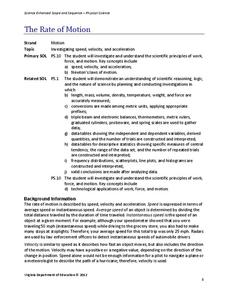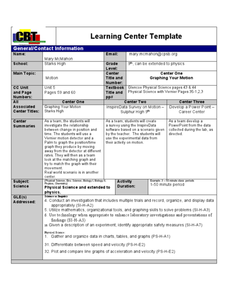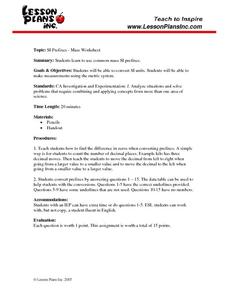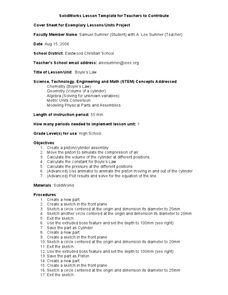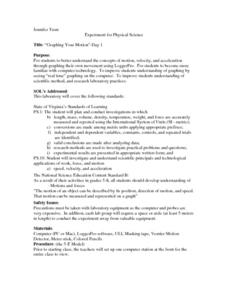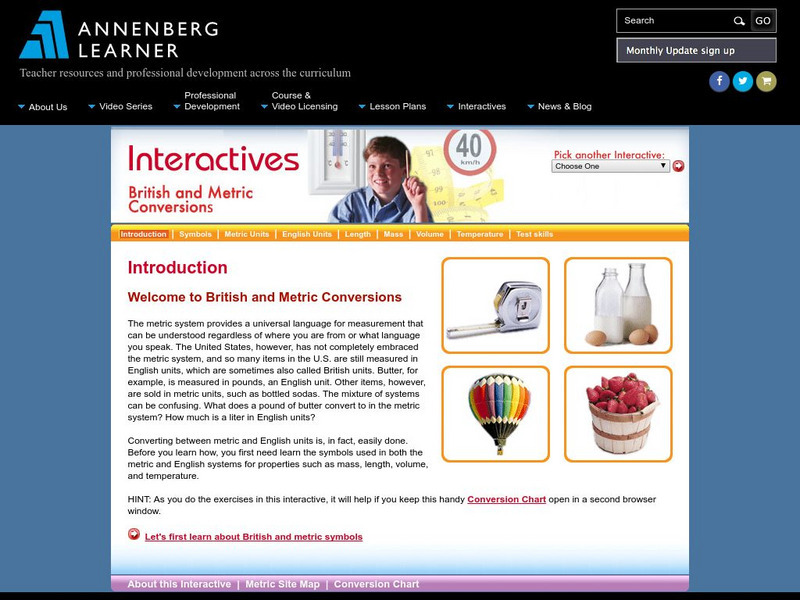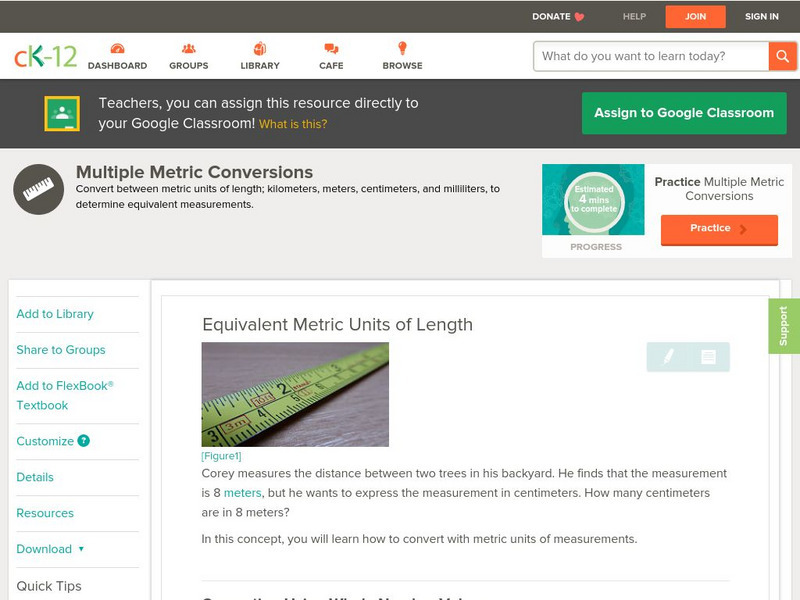Virginia Department of Education
The Rate of Motion
How much time does it take to jump over three balloons? Pupils calculate the speed of tasks that require different motions. They determine motions for tasks such as walking, skipping, hopping, and jumping before creating a spreadsheet...
Curated OER
It's About Time!
Students examine concept of time, and explore difference between analog and digital clocks; students make art project to represent time and create a time-story problem and solution.
Curated OER
Time Zones
Students are able to read and also use a variety of timetables and charts. They perform calculations with time, including 24-hour clock times and time zones. These are very important concepts that Students probably have to bear in mind...
Curated OER
Maps and Modes, Finding a Mean Home on the Range
Fifth graders investigate data from maps to solve problems. In this data lesson, 5th graders study maps and collect data from each map. Students present their data in a variety of ways and calculate the mode, mean, median, and range.
Curated OER
"Graphing Your Motion"
Students study the concepts of motion, velocity, and acceleration through graphing their own movement using LoggerPro. They explain the difference between speed and velocity using the weather vane example. They discover the difference...
Curated OER
SI Prefixes and Mass
In this SI prefixes and mass activity, learners are given measurements of mass and they covert to the given measurement by moving the decimal the proper number of places to the left or right.
Alabama Learning Exchange
Effects of Friction on a Moving Block
Learners investigate how friction affects the movement of a block across surface areas. They test five different kinds of surfaces—smooth surface, wax paper, a paper towel, course, and fine sandpaper. They predict and record the results...
Curated OER
How big is a whale
Students research the size of whales using print books or the internet. Students do the research in groups. They compare and graph the results.
Curated OER
Partial Products
Third graders study partial-products algorithms. In this math lesson, 3rd graders use an algorithm to find the product of factors. Students discuss the relationships between multiplication and division.
Curated OER
Models and Algorithms to Solve Multiplication Problems
Students choose the correct strategy to solve multiplication and division. In this algorithm lesson, students use at least two strategies that use properties of operations and estimation. Students also recognize the relationship between...
Curated OER
Steep, Steeper, and Steepest
Fifth graders discuss ways to move large rocks. They relate this to building a rock garden, and the ways people might load boulders into a truck. Students discuss the use of a ramp vs. lifting the boulder straight up onto the bed of the...
Pennsylvania Department of Education
The Weight of Things
Students explore weight. In this math instructional activity, students predict which item weighs more and discuss how they arrived at their decision. Students weigh several items to determine which weighs more.
Curated OER
Reading Trees: Understanding Dendrochronology
Students examine tree-ring dating and discuss the lack of water the settlers in Jamestown faced. They create paper tree rings, simulate rain patterns, and describe the history of construction paper tree sequences.
Curated OER
Tomb Explorer/Temple Explorer
Fourth graders build an explorer vehicle which they program through an obstacle course to enter the tomb or temple to discover artifacts.
Curated OER
Boyle's Law
Students create a piston/cylinder assembly using SolidWorks. In this technology lesson, students calculate volume, pressure and Boyle's law constant. They simulate equalizing air pressure by moving the piston out of the cylinder.
Curated OER
Graphing Your Motion-Day 1
Ninth graders explore the concepts of motion, velocity and acceleration through graphing their own movement using LoggerPro. They become more familiar with the computer technology. Students explore graphing in real time and graph on...
Curated OER
Using Multiplication to Solve Word Problems
Students explore math functions by solving word problems in class. In this multiplication lesson, students utilize colored cubes and base blocks to visualize multiplication problems. Students identify the multiplication values within...
Annenberg Foundation
Annenberg Learner: British and Metric Conversions Interactives
The resource assesses students on British and metric conversions. There are tutorials on metric units, length, mass, volume, English units, symbols, and temperature. There is also an introduction and an interactive activity to test the...
Other
Metric Conversion Calculator and Charts
Metric Conversions offers online calculators for making conversions, downloadable tables in many types of metric conversion (pdf format), and free conversion tools to put onto your website or dynamic pages.
Khan Academy
Khan Academy: Metric Units of Length Review
Metric units of length (millimeters, centimeters, meters, and kilometers) are reviewed and practice problems are provided.
CK-12 Foundation
Ck 12: Measurement: Equivalent Metric Units of Length
[Free Registration/Login may be required to access all resource tools.] Convert metric units of length.
Other
Federal Highway Administration: Si (Modern Metric) Conversion Sheet
Very complete chart of conversion factors for English to SI (metric) unit measurements and SI (metric) to English unit measurements. Includes length, area, volume, mass, temperature, illumination, and force & mass (stress).
University of Waterloo (Canada)
University of Waterloo: Cemc: Metric Conversion [Pdf]
This worksheet is designed for Grade 7 students. The students are expected to: i. understand both metric and customary systems of measurement ii. understand relationships among units and convert from one unit to another within the same...
CK-12 Foundation
Ck 12: Measurement: Conversions of Measurements in Metric Units
[Free Registration/Login may be required to access all resource tools.] Convert metric units of length, mass, or capacity by multiplying by powers of ten.


